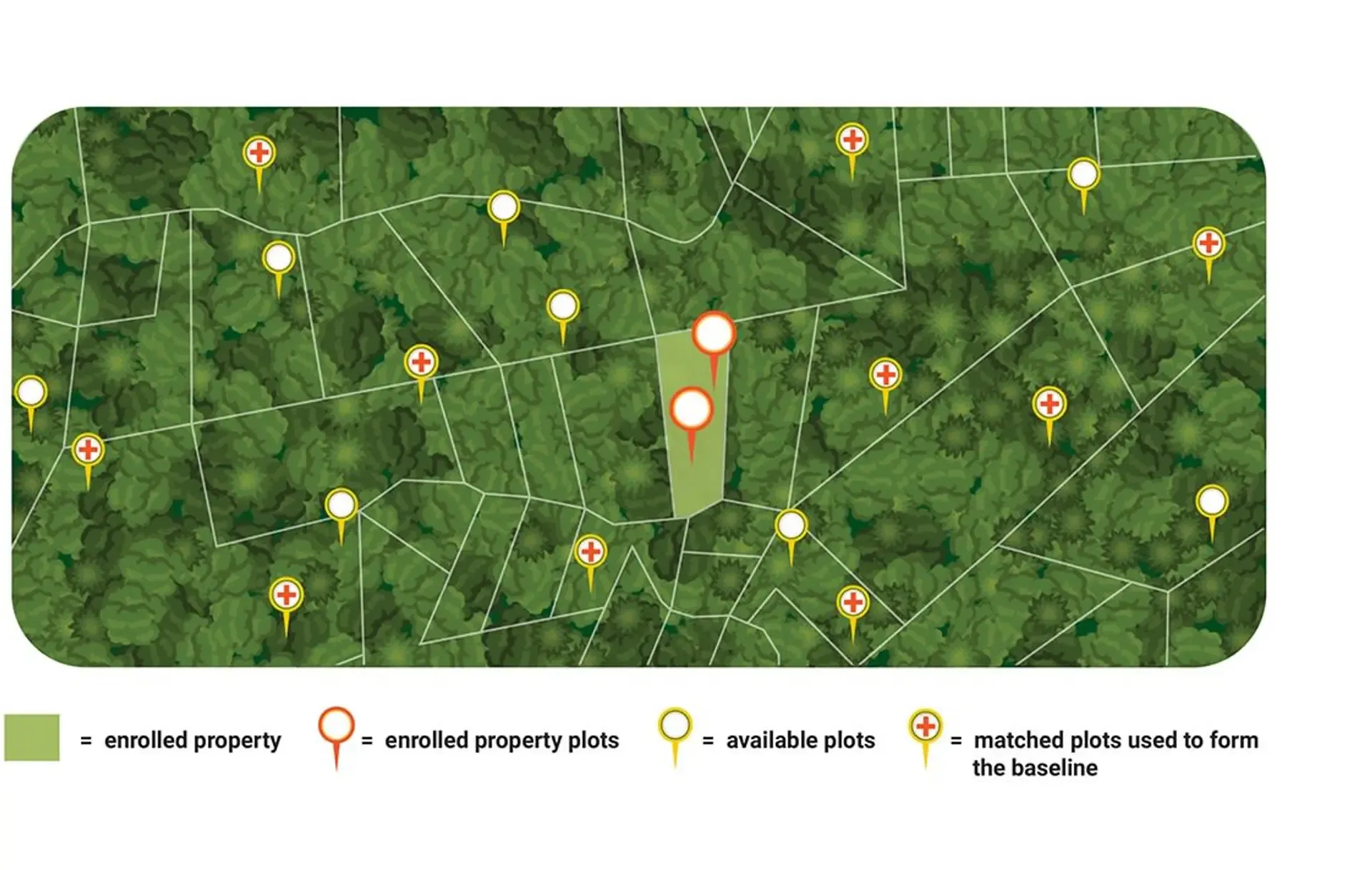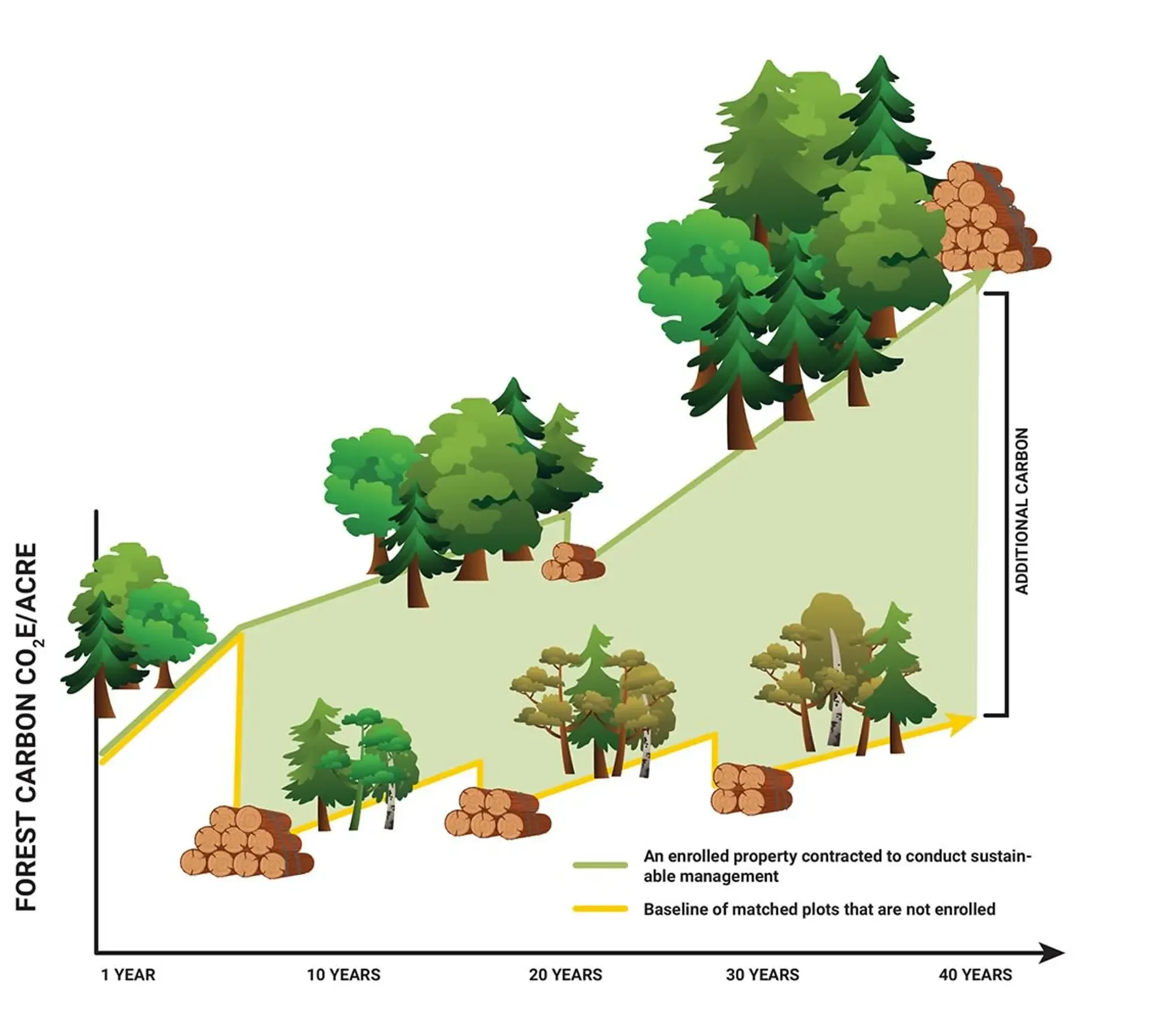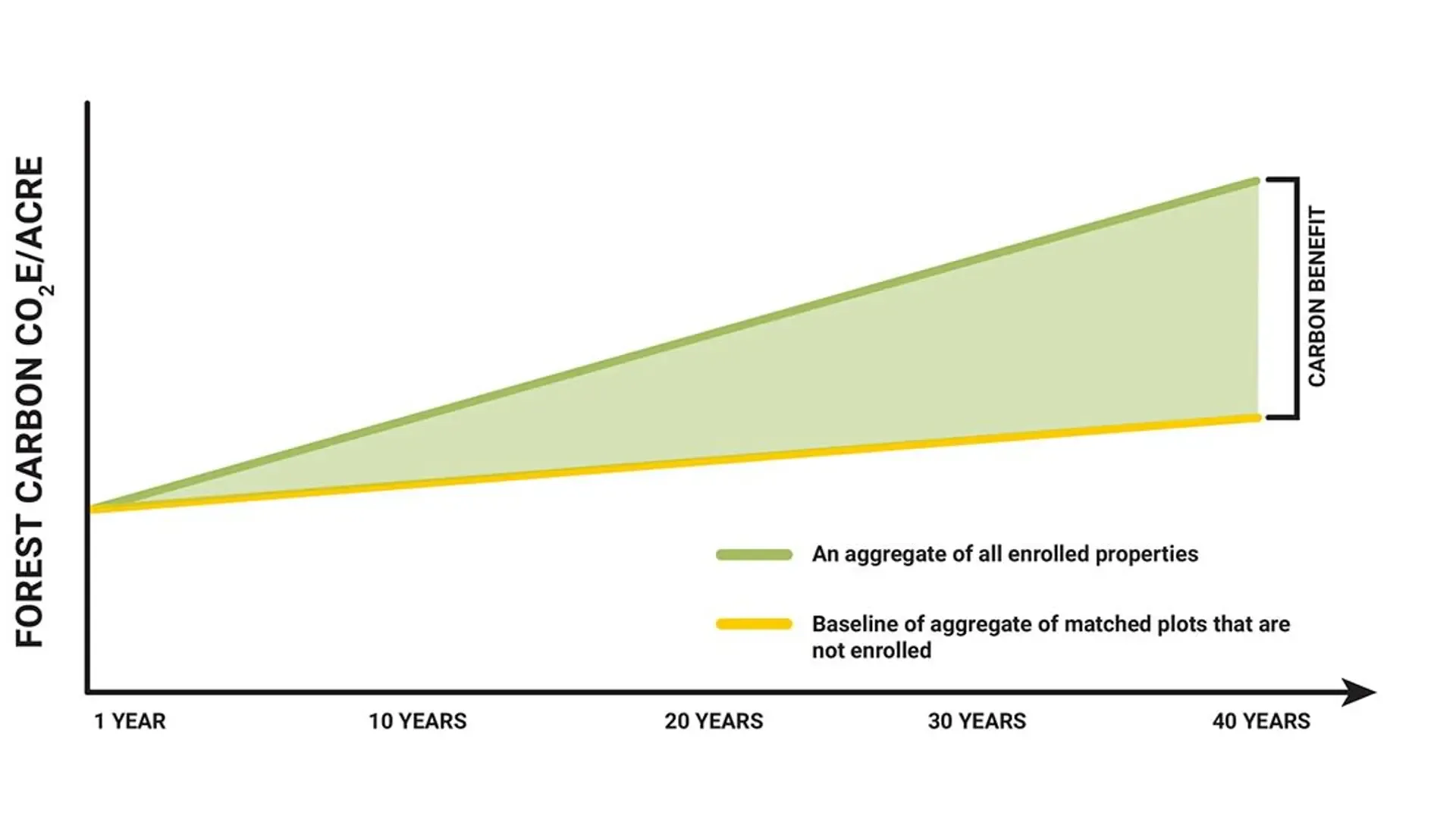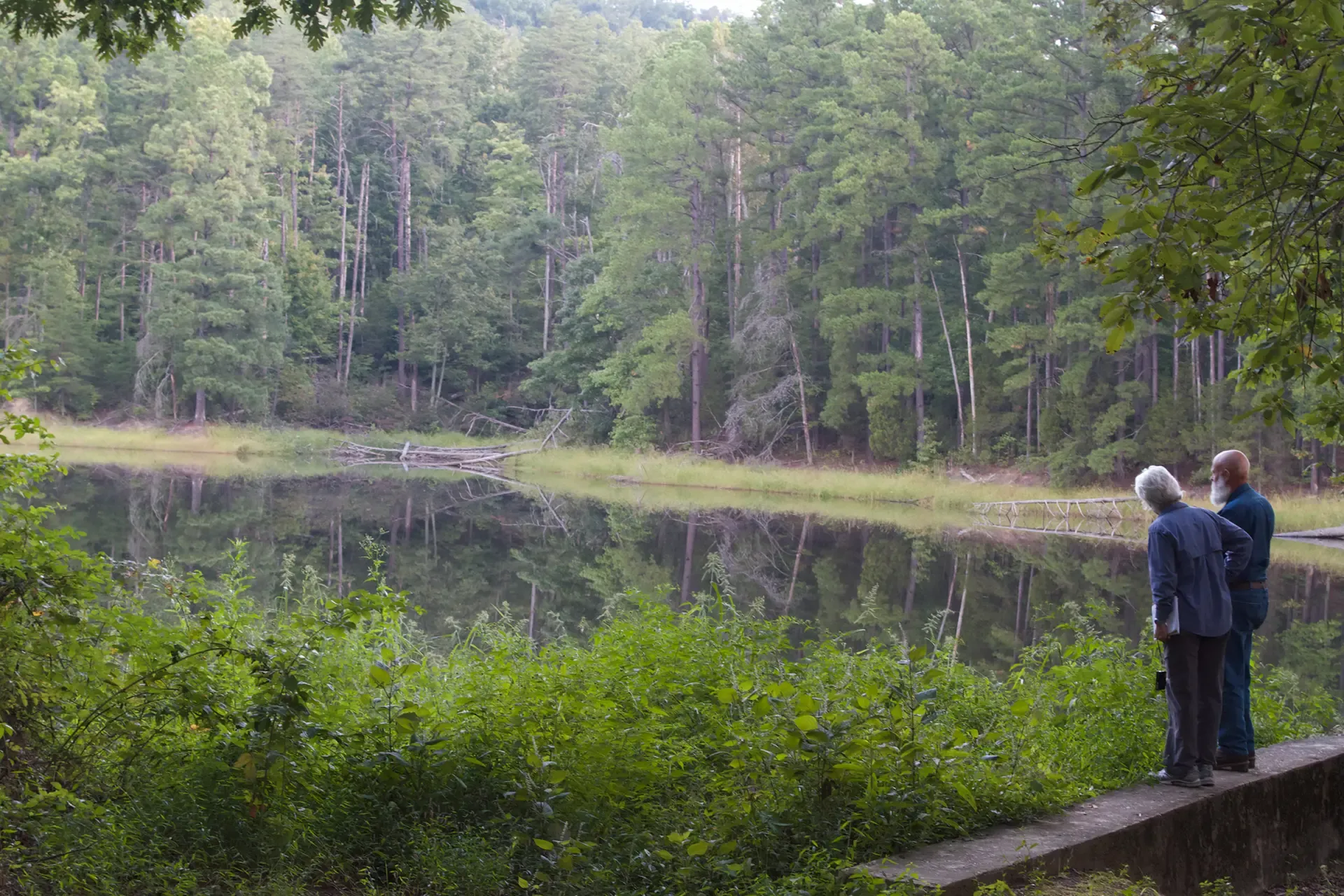Advancing Integrity with the New Improved Forest Management Methodology

International leaders have called for greater integrity in carbon accounting to ensure the long-term success of voluntary carbon markets. To meet this need, the American Forest Foundation, The Nature Conservancy and TerraCarbon have pioneered a new approach for calculating a carbon benefit that increases accuracy and transparency. This new methodology does not base its calculations on the commonly used projected baseline, which can be limiting. Rather, this methodology uses a dynamic baseline, which makes it possible to accurately attribute a carbon project and its associated forest practices as the intervention responsible for the additional carbon sequestration and storage. This new methodology is approved by Verra's Verified Carbon Standard.
- - - - - - - - - - -
IMPORTANT DEFINITIONS
Additionality has occurred if the carbon generated from a forest carbon project resulted from the specific intervention. A project has additionality only if the carbon sequestration and storage would not have occurred absent the project.
Baseline is the starting point for calculating how much additional carbon is sequestered and stored as a result of a particular carbon project. A projected baseline is a static model of how much carbon would be sequestered and stored on the land over the next 20-100 years absent the project, based on assumptions of future growth and management at the time the model is calculated. A dynamic baseline is a real-time, regularly updated sample of similar forests outside the project where improved forest management practices are not contracted to be implemented.
- - - - - - - - - - -
A Methodology That Considers the Dynamics of Forest Ownership in the U.S.

An analysis from The Nature Conservancy found that the carbon potential in forests could be nearly doubled by implementing improved forest management practices.

The largest portion of forests — 39% — are owned by family forest owners. Yet, only 1% of the land in carbon projects is from these small parcels.

In the U.S., most family forest owners are not actively managing their land. Only one in five landowners meet with a forester, and fewer than 13% have a written forest management plan.
How It Works
Step 1. Establish a dynamic baseline of highly similar forested properties outside the project area.
Each enrolled property is divided into homogeneous stands or plots. A sample of these plots is selected for monitoring. Each sample plot is matched to 10 comparable unenrolled plots based on a minimum of 14 variables, statistically selected based on their ability to ensure similarity. This grouping of similar unenrolled plots is designated as the control group that provides a robust and real-time baseline. In the U.S., the baseline is established using the U.S. Forest Service's Forest Inventory and Analysis (FIA) database (essentially our national forest census).

- - - - - - - - - - -
DETERMINING A MATCH
Properties are matched based on a minimum of 14 variables, such as:
Must be a non-project area
Same stand origin (plantation or natural)
Forest type group
Landowner ownership class (public/private)
Ecoregion
Proximity to project area
Stand age
Site class (soil class)
Regeneration class stocking (density of young trees)
Commercial stocking (density of mature trees)
Land elevation
Land slope
Quadratic mean diameter (average width of trees)
Distance to improved road
- - - - - - - - - - -
Step 2. Compare the carbon sequestered on enrolled properties (that are implementing improved forest management practices) to the baseline of unenrolled properties.
Enrolled landowners are paid to conduct improved forest management practices that increase forest carbon yield over time, such as extending stand rotations and employing limited, sustainable harvesting. To measure the carbon benefit of the project, enrolled properties are compared to the dynamic baseline of matched (unenrolled) forest plots. By measuring the difference between the forests, the methodology pinpoints the project as the intervention that contributed to the carbon benefit, providing increased accuracy and transparency to the marketplace.

Step 3. Calculate the carbon benefit at a landscape level.
Enrolled properties in a region are aggregated, as are the matched plots that form the dynamic baseline. The difference between the enrolled properties and matched (unenrolled) plots is the amount of gross carbon attributed to the project, which can then be sold in the form of verified carbon credits. This is calculated at each verification cycle.

The Family Forest Carbon Program: The Only Program Using This Advanced Methodology
The Family Forest Carbon Program created by the American Forest Foundation and The Nature Conservancy is a forest carbon program uniquely designed to increase access for small forest owners. The program supports landowners in managing their forests in ways that sequester and store carbon long term. The program uses the improved forest management methodology to calculate its carbon benefit to ensure a measurable, transparent and meaningful impact by these landowners. In turn, the program partners with companies to buy the verified carbon credits to neutralize their unavoidable emissions and achieve vital social, economic, and environmental outcomes.
The American Forest Foundation and The Nature Conservancy are committed to meeting or exceeding existing standards for carbon accounting. Not only is the partnership advancing the practice of determining additionality, but it is also making robust commitments to ensure permanence, or confidence in the carbon benefit claimed for at least 100 years. We are doing so through:
Smart program design that empowers landowners to transition to a long-term sustainable forest management regime that results in improved carbon sequestration and high-value forests
Registry with Verra’s Verified Carbon Standard that sets aside credits that are not sold as part of a pooled buffer system
Long-term monitoring and engagement of the properties enrolled in our program
Our commitment to high-quality forest carbon impact meaningfully unlocks climate mitigation opportunities urgently needed in response to the global climate crisis.
If you would like more information, visit forestfoundation.org/carbon.
type: asset-hyperlink id: 2V9tqgrTlhfT6zH8yrr3rx.
Related Articles

April 13, 2021
Determining a True Carbon Benefit Part 1: Additionality
Of all the concepts in the world of carbon credits, perhaps the most difficult to understand, yet critically important is ‘additionality.’ Ensuring carbon additionality is essential to ensure a company’s climate investment is making a true, positive difference. Christine Cadigan, Senior Director of the Family Forest Carbon Program, further explains the concept.

May 26, 2021
Determining a True Carbon Benefit Part 2: Baselines
The Family Forest Carbon Program has created a new methodology, including an innovative approach to setting a baseline, similar to what is done in medical trials.

September 2, 2021
Determining a True Carbon Benefit Part 3: From Intention to Action
When measuring additionality many carbon projects ask, “Is the carbon generated from a forest carbon project because of the project or would it have happened absent the particular project or intervention?” While intention does play a role, it is often misinterpreted by those unfamiliar with the needs and behaviors of forest owners. Rather, to create a true carbon impact, a forest carbon project should factor intention into program design, yet measure real-life behavior.